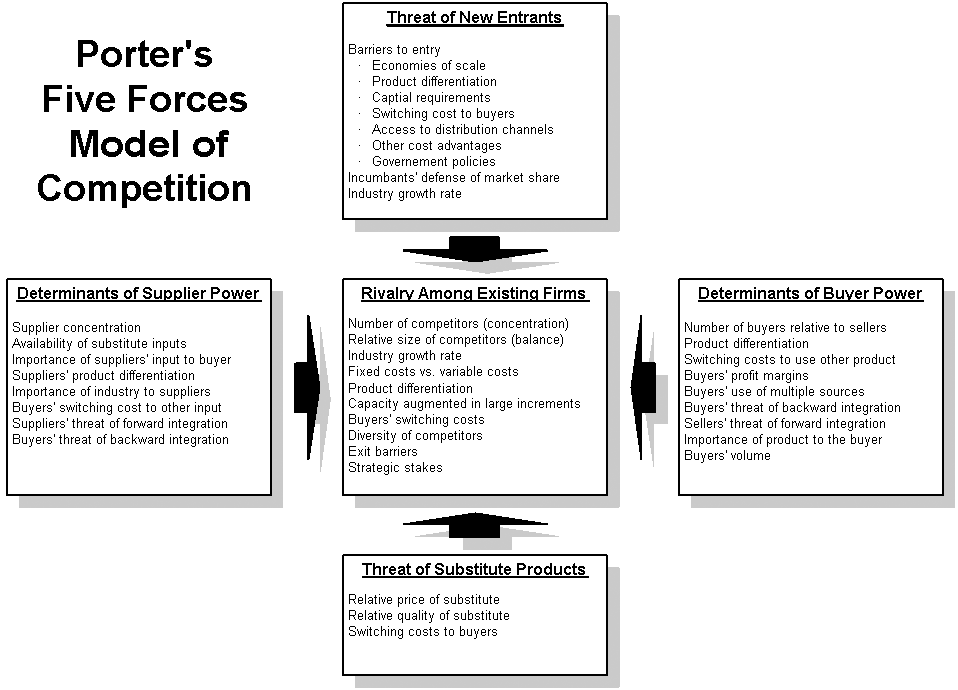If you are a strategic thinker or economist by nature, take a look at The Lords of Strategy: The Secret History of the New Corporate World, by Walter Kiechell III, (Amazon: http://amzn.to/ohqbLp). Walter is a clear-eyed, thorough, and erudite journalist who honed his craft at Fortune, and Harvard Business Publications.
What’s shocking to realize is that 50 years ago, strategy didn’t exist in corporate America. The book traces the development of strategy so clearly, you can read the economy right through it. You see how Harvard B school begat BCG, begat Bain, begat McKinsey…and follow the intellectual challenges that led to the tools we now take for granted.
No tome on strategy would be complete with a reference to Michael Porter and his famous Five Forces, so if you’re playing catch up with your strategic theory, or are tired of being the only one at the table who doesn’t know what it’s all about, here’s your cheat sheet. Watch him, then go get the book and put it in perspective:
In this short interview Michael Porter, explains the framework of his five competitive forces (listed below).
- Existing competitive rivalry between suppliers
- Threat of new market entrants
- Bargaining power of buyers
- Power of suppliers
- Threat of substitute products (including technology change)
He guides us through applying these five forces, which in turn helps us answer game-changing questions such as:
- How do you position yourself to find that spot within the industry where you can command a good profit?
- What is really causing profitability in your industry?
- What are the trends that are most likely to be significant in changing the game in the industry?
- Where are the constraints; and if you relax them, they might allow you to find a really strong competitive position.
Porter’s 5 Forces – and Our Principles
So how do you ground Porter’s 30,000 foot strategy in day to day reality? Watching him speak, a key phrase stands out: Alignment. He says that strategy is about aligning the goals so that all the participants can make choices that reinforce one another. Here are some of the key elements we incorporate into our planning:
1. We’re Data Driven
The conversation about marketing is all about Data — but the hidden truth is that most people who go into marketing are not data types. They’re creative. Or people people. The last thing they want to look at is a bunch of numbers. That’s why we do it for them. Our analyst is Blueprint Certified, and every person at TEMPO is Google Analytics Certified. So we can give our clients the data they need to make key decisions.
2. We build media strategy around Pillars and Fillers
Here’s how to put Porter’s theory about alignment and reinforcement into actual practice: when we develop a digital strategy for our clients we integrate powerful pillars with reinforcing messages – the ‘fillers’ that create a sense of ubiquity. The result is a brand awareness that is greater than the sum of its parts. Each message ties back to the pillars and illustrates the core points in a fresh format.
3. We go with Pros
What separates the successes from the dabblers? Successful companies hire professionals. The difference between a company that thrives and a company that limps along is the willingness to delegate to pros who know their niche best. Expert suppliers increase your network and your net worth. In the digital space where change is constant and expertise is fleeting, you have to depend on people who spend their days keeping up to date. It’s just common sense.
4.The work is dynamic.
Listen to Porter talk about how the 5 forces are dynamic, not static. So is your marketing. Orient your thinking toward a perpetual state of learning and look at your marketing as the tool by which that learning takes place.

